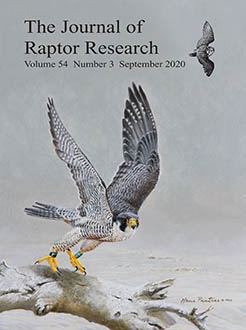For more than three decades, a restored population of Ospreys (Pandion haliaetus) in the Minneapolis-St. Paul, Minnesota, metropolitan area has used artificial nesting structures nearly exclusively. Nests on opportunistically used structures (not originally intended for nesting) were higher, farther from lakes, and in locations with greater coverage of pavement and buildings than nests on structures provided specifically for Ospreys. The frequency of use of provided structures was best predicted by a linear model that incorporated the height of the nest, the height of the nearest tall tree or artificial structure, distances to the nearest tall tree/structure, road, and lake, and coverage of trees, water, and developed land within 200 m of the nest structure. Since 1995, nesting success has ranged from 61% to almost 90%, averaging 76%. Active nests (i.e., nests where eggs were laid) averaged 1.6 young fledged per nest since 1995. Adults typically used the same structure in successive years, with little change in productivity (i.e., the number of young produced per active nest) in successive years. However, a few adults that experienced lower productivity used different structures in the succeeding year with a marked increase in productivity. Productivity at nests on provided structures did not differ from that at nests on opportunistically used structures. Productivity was not related to characteristics of the nest structure or its vicinity.
How to translate text using browser tools
2 October 2020
Nest-Site Selection and Nesting Success in a Restored Population of Ospreys (Pandion haliaetus) in the Minneapolis-St. Paul, Minnesota (USA) Area
Kenneth L. Petersen,
Steven Hogg,
Judy Voigt Englund
ACCESS THE FULL ARTICLE

Journal of Raptor Research
Vol. 54 • No. 3
September 2020
Vol. 54 • No. 3
September 2020
artificial nest structures
nesting success
nest-site selection
osprey
Pandion haliaetus




